Foresters typically replant a forest within one to two years after a harvest. Site prep techniques create an ideal micro-environment, giving baby trees the best chance to grow into a healthy forest.
YULEE, Florida—Jordan Huntley knows a thing or two about raising little ones.
The father of five has seen repeatedly how a lot of love and investment in the early years can set individuals up for success.
In the same way, he takes special care to ensure the success of the baby trees he’s responsible for in Rayonier’s forests. As a forester called a Resource Land Manager, it’s his job to replant our forests here in the Southeast within about a year or two after a harvest.
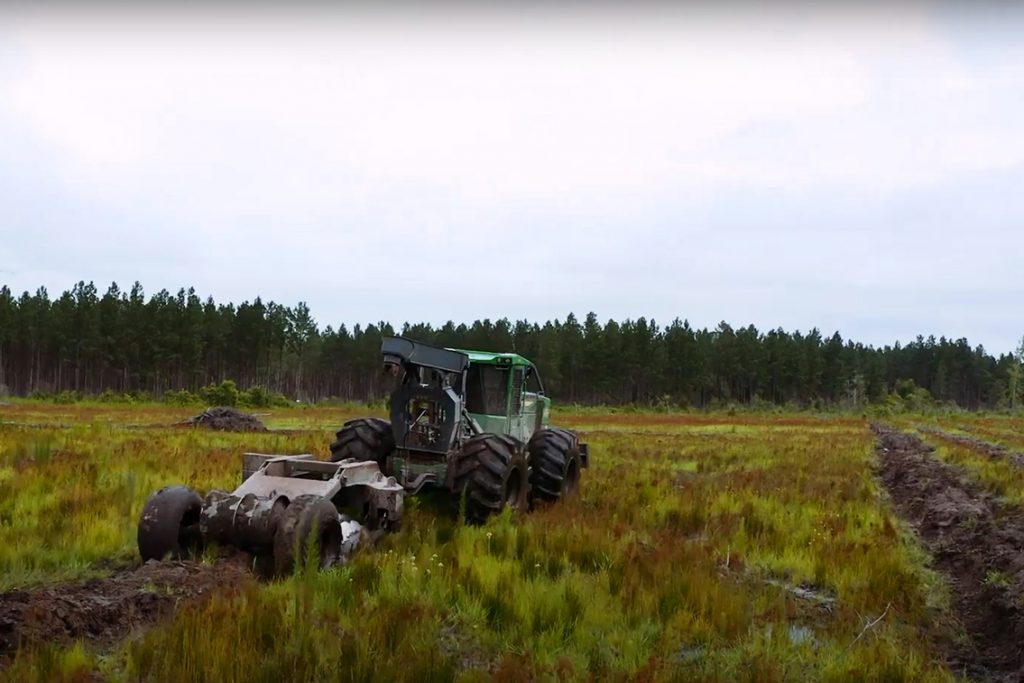
How “site prep” sets trees up for success
Before planting, foresters use site preparation techniques to ensure the best possible growing conditions for baby trees. Just as a farmer tills the soil when planting season nears, our foresters may establish bedding, clear debris, use herbicides and apply other techniques to ensure those vital early years provide excellent growing conditions for the seedlings.
Jordan explains it this way: “If you think of a circle with a one-foot radius, and that seedling’s sitting right in the middle, that micro environment around that seedling in those first couple years is the most important thing for the good health of that tree later on in its life. So, in order to do that, you want to provide for it the most basic things that plants need: the soil, water, and sunlight.”
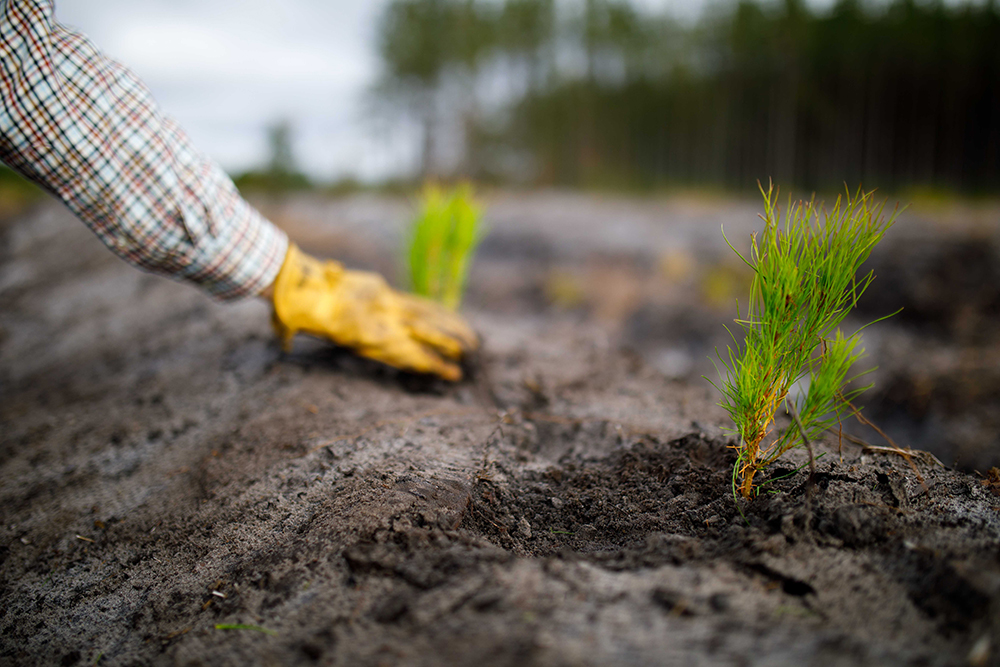
Varies based on location, conditions
Site prep techniques can be drastically different depending on the location, terrain, and type of trees being planted. For example, in the U.S. Pacific Northwest, we plant 18-month-old seedlings. Their strong start in a nursery enables them to withstand cold weather conditions. They have enough height to compete with heavy amounts of woody debris, which we leave on the ground to prevent erosion on steep slopes. In the Southeast U.S., seedlings are just 6 months old and much smaller. Our site prep efforts are much more extensive here to ensure the fragile baby trees survive.
Many of our Southeast forests are in low-lying areas, where water tends to pool on the ground. Those conditions are excellent for a mature pine tree, but they could drown a baby seedling. In addition, faster-growing weeds and brush could outgrow the tiny seedlings, stunting their growth or even killing them. A site also may have many branches and tree limbs on the ground, which can make planting difficult. That’s why site prep is especially essential when preparing to plant here.
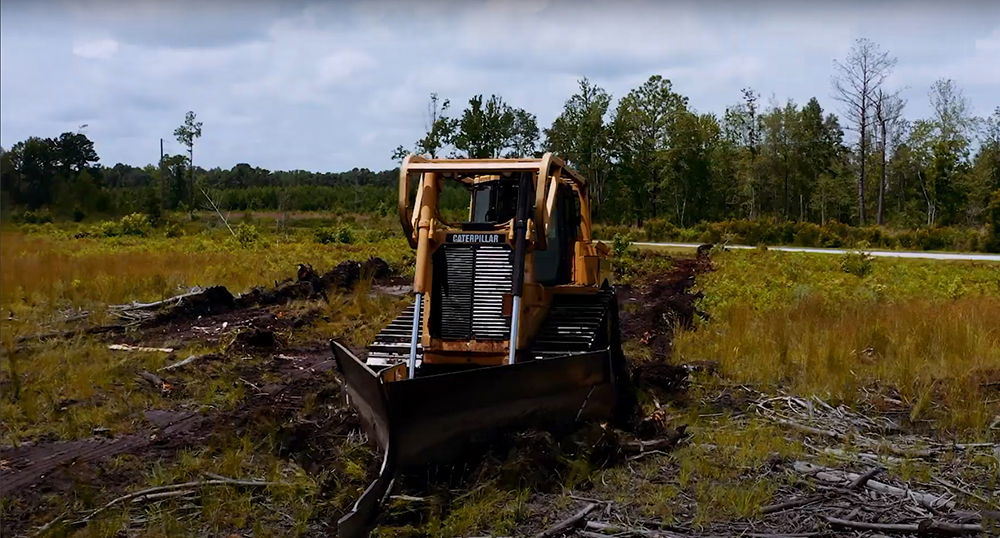
Clearing debris to give seedlings more light and soil
After a logging operation, a lot of limbs and debris can be left behind. Some woody debris can be good: as it breaks down, it enriches the soil, acting like a natural release fertilizer for the new forest. But too much can rob young seedlings of the soil and sunlight they need to thrive.
We use a tractor with a plow attached to clear the debris and move it into piles. These piles provide refuge for a variety of species like snakes, squirrels, rabbits and frogs. In extreme cases, when the debris is especially thick, we use a V-plow. The plow’s angled blades are ideal for breaking through large pieces and pushing them out of the way.
We also use what’s called a root rake. Just like the rake you might use in your backyard, it’s designed to pick up large impediments while allowing the soil to sift through and remain on a site.
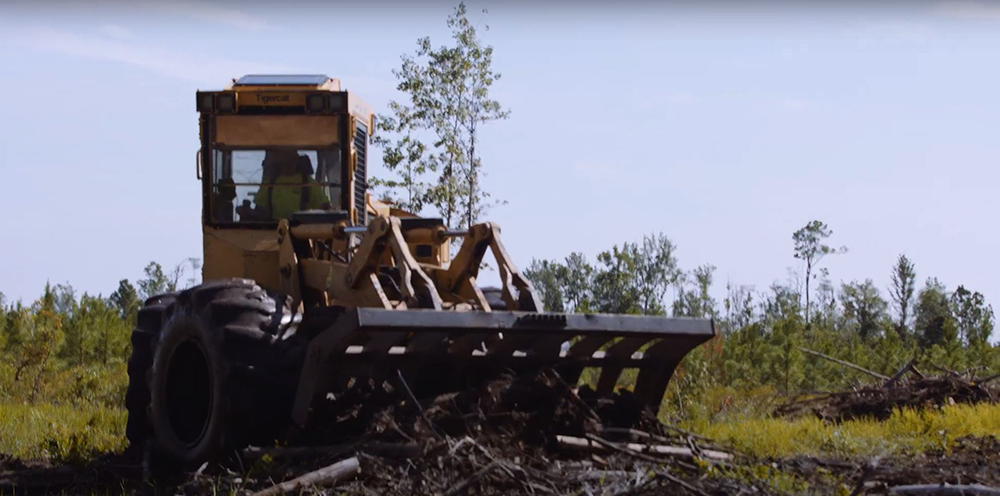
Using bedding to lift seedlings above the water table
After years of studying which techniques enable our forests to thrive, our foresters in the Southeast have determined that planting seedlings in bedded rows can make all the difference in low-lying areas.
Using a tractor or skidder attached to a Savannah plow, we create rows that will place the seedlings 18 inches above ground level. That will enable them to establish strong, healthy root systems without drowning in the more watery ground below.
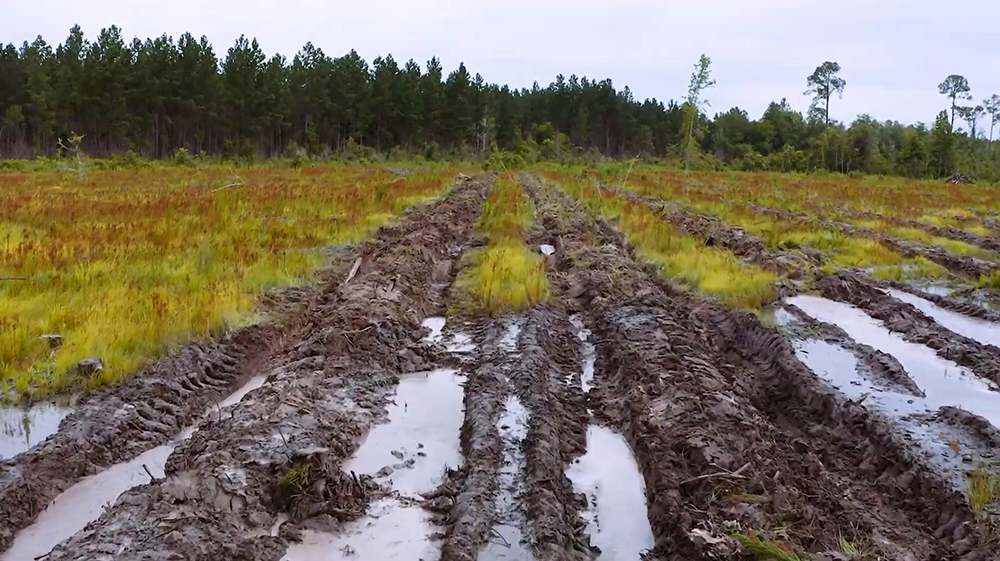
When it’s time to plant, our planting crews use a tractor to pull a “hopper” through the planting rows, and a person sitting in the hopper drops the seedling in the ground at just the right moment. The hopper uses a knife-like disk in the front to cut a narrow slot in the ground, then after the seedling is in place, two angled wheels in the back pack the soil back together around the seedling.
We only plow these kinds of rows in wetter soil conditions. Dryer, sandier soils won’t drench our trees, so we don’t need the rows. Forests with dryer soils here in the Southeast often serve as a habitat for gopher tortoises. We typically plant those sites by hand to ensure we don’t disturb active burrows, as discussed in this video about protecting gopher tortoise habitats.
Applying Herbicide to Protect Baby Trees
Weeds can ruin any type of crop. In forestry, a ruined stand of trees can literally stall the growth of a forest for years. By using herbicides, we can remove the competing plants from the forest before we plant, giving the seedlings the best chance at survival.
However, herbicide use is extremely limited, explains Senior Resource Land Manager Ed Carter.
Applications are done after setting up buffer zones to prevent the herbicides from reaching wildlife corridors and waterways.
“We stay at the lowest amount needed, well below the maximum amount that state guidelines allow,” he says. “Our goal is just to control the vegetation to give that tree a chance.”
He says the herbicides are the same types used in residential weed treatment. The difference? On a per-foot basis, he says foresters use in 25 years what a residential user might use in one year.
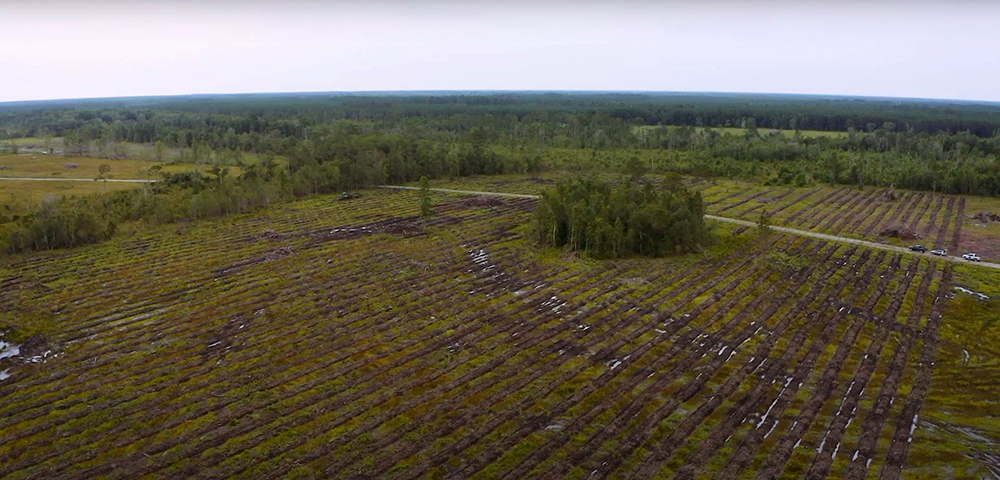
A great forest starts with great site prep
Just as a child rapidly grows in the early years, a well-prepared, healthy site will serve a young forest well. With an ideal micro environment, seedlings will soon tower over competing plants. Within just a couple years, they will be taller than the people who planted them. And over the years they will provide a home for countless species, sequestering carbon, contributing to cleaner air, and ultimately providing the timber for homes and other products the next generation will need.





Leave a Comment